Best Practices for Modern Bath Design
From curbless showers to vessel sinks, it’s important to get the details right.

We ask a lot of our bathrooms. They’re our workshops for hygiene, health, and beauty; a salon and a spa; a pit stop and a retreat. A full bath will have at least a toilet, sink, and combined tub and shower. Toilet-paper holders, mirrors, towel bars and hooks, and some amount of storage are basic necessities too. Yet today, we often deck out our bathrooms with everything from wall-mounted toilets to steam showers.
Bathrooms with private water closets for the toilet, double-sink vanities, and separate shower and freestanding tub arrangements are now quite common. Large windows and skylights, backlit medicine cabinets, towel warmers, and an abundance of designer materials can add style, comfort, and convenience. And advanced building materials expand project possibilities to the edges of a designer’s creativity.
If a luxury bathroom is in the budget, go for it. To make the most of today’s trends, though, it’s important to know the refinements that make them work. In this way, making your bath beautiful won’t sacrifice the function that’s vital to this hardworking room.
As you continue reading, you’ll repeatedly encounter the term modern. While its usage here is generally meant to imply that the design features we discuss and the baths we show are current and trendy, they are also often modern—or at least transitional—in style. But that doesn’t mean that the ideas can’t be translated into more traditional baths. They can.
Curbless showers breaking down barriers
The popularity of curbless, or barrier-free, showers stems from homeowners’ desire for safer, more accessible, and more airy bathrooms. Homeowners want showers they can safely use when they get older or become less mobile. Curbless showers fit the bill and tend to have a more open, expansive vibe compared to so many conventional showers with step-over curbs.
The slope of the shower floor in a curbless shower is often gentle enough to be barely noticeable, playing up the seamless quality of the space. While using a slip-resistant surface in the shower is recommended, changing floor color or material isn’t necessarily required. Many baths have large-format tiles outside of the shower and small-format grids or mosaic made of the same stone or porcelain on the inside.
Sleek, minimalistic glass enclosures are commonly used with curbless showers to enhance the bright, airy feeling. Some designers choose to omit the shower door altogether, leaving the shower partially open. To keep water contained, a fixed panel of glass might be all that separates the wet area from, say, a nearby vanity. It should be noted that the more open the bathroom, the quicker the heat from warm water will escape the shower.
Open, curbless showers are common the world over. In countries where space efficiency is critical, it is not unusual to find the shower, toilet, and lavatory positioned around a floor drain. This “European style” or “wet bath” concept is trending here now. A popular application is pairing a shower and freestanding tub in the wet zone; less often a toilet will replace the tub. In either case, the floor under the tub or toilet needs to be flat—neither fixture likes an inclined installation very much. Put the drain and sloped floor where the showering occurs.
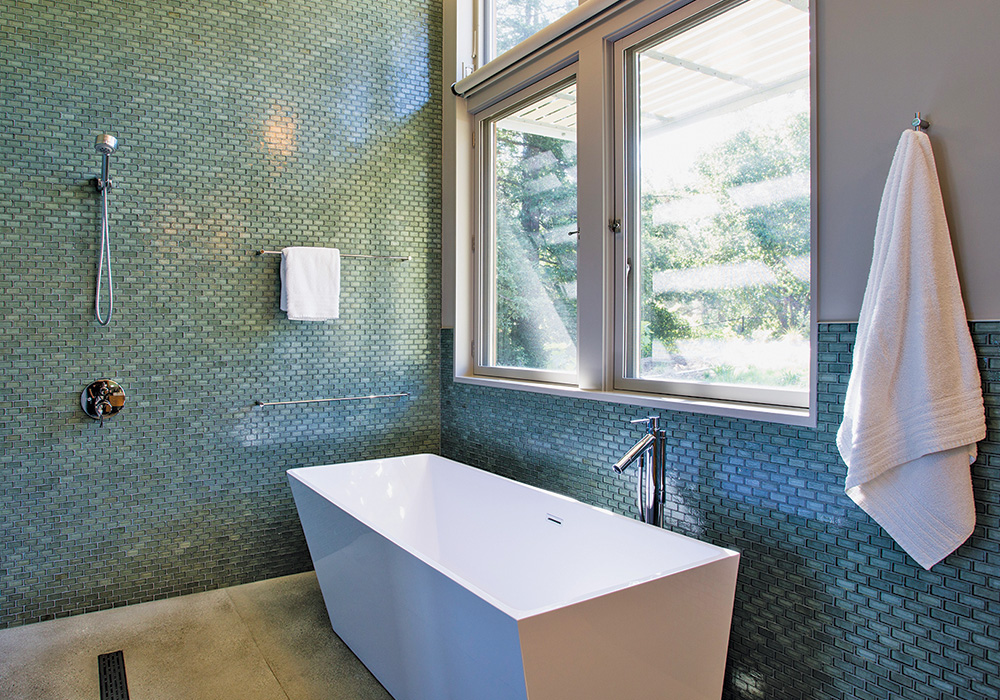
Four cautions1. When there is no curb to act as a water stop, the waterproof shower-pan installation is extra critical, especially at the juncture between the flat and sloped floor. Thanks to linear drains and innovative tile systems from Schluter, Wedi, and others, getting the drainage and waterproofing details right is easier than ever. Preformed, tile-ready shower pans are available too, but using them may require that the shower subfloor be lower than the adjoining subfloor. As always, follow the manufacturer’s instructions to the letter. 2. If you plan to install an open shower, you should either make sure that all other fixtures are out of the range of sprayed and splashing water, or be prepared to clean regularly. Even if you don’t mind the tub or toilet getting wet, that splatter will leave water marks and soap and shampoo residue. 3. Forget about using a thick bath mat outside a hinged shower door on a curbless shower. The bottom of the door will likely be too close to the floor to clear the mat when it swings open. An expensive alternative is a sliding shower door with top rollers. A less expensive option is using a shower door that swings both ways—into the shower and out of it. (Note that a door that swings only inward is neither safe nor recommended.) 4. Whether you go doorless or not, locate the shower control valve so you don’t have to walk all the way into the shower to start the hot water. It’s inconvenient and a code violation. Ideally, the control should be within a 36-in. reach of the shower entry, which may mean it is remote from the showerhead. |
Floating Vanities graceful style and storage
Like barrier-free showers, the most notable effect that a floating (or wall hung) vanity cabinet has on a bathroom is to create a sense of spaciousness. The expanse of floor seen beneath the cabinet makes the bathroom feel bigger than it actually is. Wall-hung vanities with open shelves below the counter amplify the impression of openness even more.
Commonly built with the clean lines of frameless cabinetry, floating vanities are decidedly modern, even minimalist in style. A long wall-hung vanity is impressive— cantilevered off the wall, seemingly defying gravity, while emphasizing the horizontal lines of the room. But that doesn’t mean it needs to be big. There are lots of smaller bathrooms that would benefit from a narrower floating vanity cabinet.
Naysayers are quick to point to the reduced storage of wall-mounted cabinets, which is true. So it might not be the best answer for a shared kids’ bath that’s on the small side. But more often, a nearby linen cabinet and medicine cabinet can supplement lost storage space. Different homeowners have different storage needs, so customizing storage toward that end is the rule. Drawers are generally more useful than shelves behind cabinet doors. You can even consider designing drawers to fit around the sink plumbing.
Floating vanity cabinets are an easy way to accommodate custom-height counters for taller or shorter homeowners, or children. It’s important to make sure your plumber is aware that you intend to install a floating vanity so they can install the rough plumbing appropriately. If the vanity is to be open in front, with the drain pipe exposed to view, select decorative chrome valves, supply lines, and drain fittings.
Though a 2×4 or 2×6 stud wall should be plenty strong to handle the vanity weight, best practice is to install two rows of solid horizontal blocking, 2×6 or larger, between all the wall studs to mount the vanity. In this way, weight can be distributed uniformly to every stud. The rows should coincide with both the top and bottom mounting rails of the cabinet.
Most floating vanities are custom built. For extra strength, the cabinet shop should glue all casework joints before mechanically fastening them and use a solid 3 ⁄ 4-in.-thick plywood back panel. In the case of storebought wall-hung vanities, it goes without saying to carefully follow the manufacturer’s installation instructions.
Freestanding tubs back and better than ever
Freestanding tubs were all but replaced by built-in tubs in bathrooms after World War II. Today, they’re back, and are quickly becoming a mainstay in modern bath design. The standard cast-iron, claw-foot tub, however, is now one of hundreds of options. Freestanding tubs are available in acrylic, fiberglass, metal, wood, stone, and composite materials. Many of today’s freestanding tubs are more fitting for modern or transitional bathroom designs.
Offering deep soaking capacities, air jets, sound systems, and many more indulgent features, freestanding tubs are ideal for homeowners who use their bath as a retreat. They are generally a luxury item reserved for suite bathrooms, as they require that the bathroom be big enough to comfortably fit both a tub and a separate shower. They’re also expensive. Only a few acrylic tubs are available for under $1000, and prices quickly skyrocket from there.

Freestanding tubs come in a variety of sizes and shapes, but how comfortable a tub is for its users should be considered as much—if not more—than the way the tub looks. Unfortunately, filling and test-driving tubs in showrooms isn’t possible, but certainly ask permission to take your shoes off to sit in them.
When planning the location of your tub, consider placing it near windows or under a skylight and try not to leave the bather staring at the linen cabinet or commode. Some tubs have center drains and fillers that allow you to face either direction in the tub. Some must be ordered as left-drain or right-drain, with internal back and arm contours on the end opposite the drain. Round tubs allow soaking in different directions. And make sure you plan good places for towels to hang nearby and a handy ledge, sill, or cubby for toiletries.
If you must have walls on three sides of the tub, don’t crowd it too tightly. If the unit you choose does not have an integral faucet, you’ll need room on the floor for a freestanding tub filler or a nearby wall to mount a faucet. The fixture you choose will determine where the tub sits in relationship to it. These rough-in dimensions and details are critical during the early stages of construction. Bring your plans to the showroom and have the salesperson assist you.
Daylit showers make bathing delightful
Architects and designers are commonly asked, “Can I have lots of natural light in the shower? I love that feeling! And can I open the window on nice days?” Still, shower windows are a controversial topic. Critics point to the vulnerability of a window in a wet area, and of course there are privacy concerns. So let’s assume that an experienced designer and builder can work together to choose products and build an assembly that will keep water out of the walls. And let’s assume that no one would put a big, clear-glass window in a shower if the exterior wall faces a public park. With these assumptions made, it safe to say that a shower full of daylight and views is delightful.
While large, tempered clear-glass view windows in a shower are rare, there are sites where privacy is not a concern. But most of us need to balance our desire for daylight with the need for privacy. Obscured glass is a great option. Window companies offer a handful of textured patterns from which to choose with varying degrees of privacy.
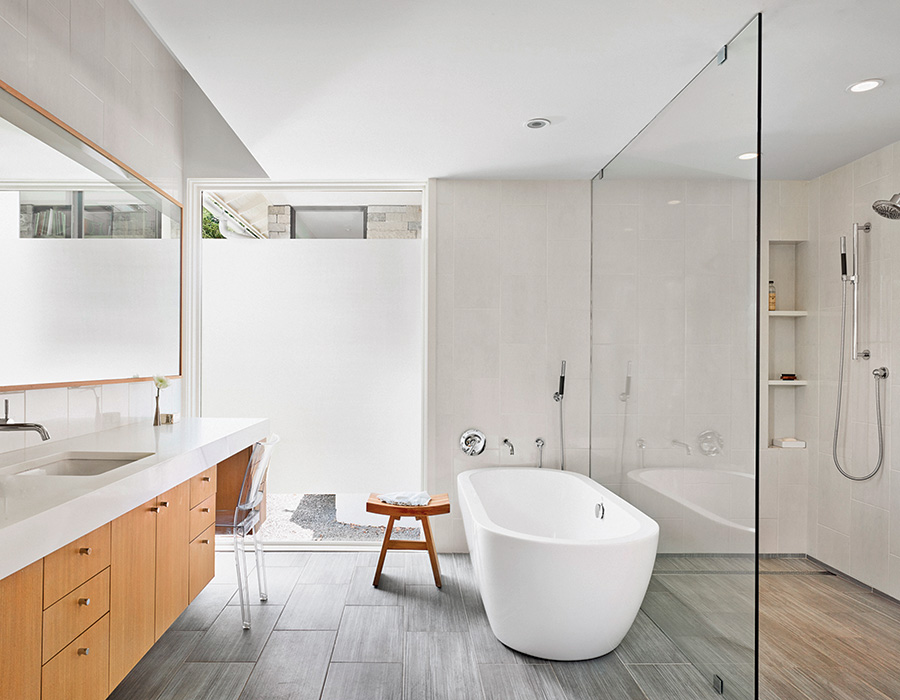
Even with perfectly watertight construction, it’s not a good idea to subject any sort of window to deluges of water with every shower. Place windows wisely to limit this from happening. Transom-style windows are great for showers. With sills set at or above eye level, they let in light without sacrificing privacy, and can even be operable to let steamy air out and fresh air in. Moreover, high sills don’t usually get wet from shower spray, so there is less risk of water migrating into the wall or fouling window seals or cranks.
If windows don’t fit into your plan, consider skylights. Both a traditional skylight and a tubular skylight can provide enough light during daytime hours that you don’t necessarily need to turn on the lights. Although they don’t provide a sky view like a traditional skylight, tubular skylights are generally much easier and more affordable to install than traditional skylights. Common sizes are 10-in. and 14-in. diameters, either of which delivers a punch of daylight more than strong enough to brighten an average-size shower even on cloudy days. Some tubular skylights include integrated LED lights and exhaust venting, making it possible to get daylight, electric light, and ventilation from this single fixture.
Wall-hung toilets offer many advantages
Aside from looking cool, a wall-mounted toilet is a great way to free up precious floor space in a bathroom. Code requires 15 in. from the centerline of the toilet to adjacent fixtures or walls and 24 in. of clear space in front of the toilet. Most designers recommend even more space around a toilet. While wall-hung toilets don’t help with clearances to the sides of the bowl, they project up to 10 in. less from the wall than a floor-mounted toilet, making a wall-hung toilet just the ticket for a small space.

A wall-hung toilet bolts to a steel-frame assembly called a “carrier,” which fits inside 2×4 and 2×6 walls. The tank and flushing mechanisms are built into the carrier. Installation is only tricky because it is new to many residential plumbers, but wall-hung toilets are not untested. They’ve long been the standard in much of Europe and in commercial construction. Most models have a plate that mounts on the wall above the toilet with the flush buttons. The plate can be removed to access the tank for some maintenance, but major repairs may require opening up the wall above the toilet. It is wise to back the toilet up to a closet or other space that is accessible from the back side or to install a removable access panel.
Among the advantages of wall-hung toilets is that they’re easy to clean around, the toilet-seat height is customizable, and they are known to be quieter than standard floormounted models. These advantages come at a cost, so expect to pay a premium for a wall-hung toilet.
A simple sink the options are endless
The venerable white, oval, drop-in lavatory sink is typically made of vitreous china or enameled cast iron. It is simple and functional, durable and easy to clean. It’s a great choice for most bathrooms. But bathroom sinks are a product category that has exploded. Assuming that your sink will be mounted in a vanity countertop, you can now also choose from glass, fire clay, solid surface, stone, synthetic stone, and a variety of metals. You can choose a sink that’s square, rectangular, round, or “organically shaped.” Double vanities can have two sinks or one trough. You can get your sink in just about any color and install it on the counter, flush with the counter, or below it.
Before choosing a fancy bathroom sink, though, consider two things: the sink’s role in the design and the many things we do at our bathroom sinks. When it comes to design, a colorful glass bowl can be the focal point in a bathroom if the surrounding materials are calm and subdued. On a vanity with lots of wood grain or busy granite, it can be one thing too many. When other details are meant to be the focus, consider a more basic sink that blends into the design without calling attention to itself.
We use the sink to wash our hands and face, brush our teeth, and shave, and stand over it to use the mirror when combing our hair and putting on makeup. Splash pools and vessels make a design statement, but sacrifice functionality. They may be better suited to powder rooms or guest baths. In baths that get daily use, consider sinks with deep bowls and installations that make it easy to clean the counter. And keep in mind the relationship between the size of the vanity top and the size of the sink. In a powder room, it may be okay for a sink to take up most of the counter. In a suite bathroom, you’ll want enough counter space on either side of the sink to place your Q-tips, razors, and hair dryer.
One more thing about those white, drop-in workhorses: the good ones costs about $100. A high-quality glass vessel sink can cost ten times as much.
Sliding doors make a lot of sense
Sliding barn doors can add a lot of style to a house, and they don’t project into rooms the way a swinging door does. So, they must be great for bathrooms, right? Well, not without careful consideration. Barn-door tracks require that the door panels float away from the wall surface. The result is a healthy gap all the way around the door when it is rolled closed. Sound and light rush through gaps like water. And consider the wall space consumed by barn doors when they are open. A 3-ft.-wide door needs that same amount of open wall space next to it, making the space unavailable for bathroom accessories if the barn door is inside the bath and furniture if it is outside. Understanding these drawbacks, barn doors may best be saved for baths in private hallways or within suite bedrooms where privacy is not a major concern.
Pocket doors have the same space-saving advantages as barnstyle sliding doors, but, when closed, they provide the same level of privacy as a swinging door. Though pocket doors have a reputation for being problematic, today’s hardware is better than ever and a good builder can easily install trouble-free pocket doors. Moreover, the door itself can be the exact same door you use for every hinged interior door in your home.
Another place where a sliding door makes sense is at a shower — for accessibility, as mentioned earlier, and for space savings. In a remodel of a skinny bathroom where a toilet or cabinet is crowding the shower, it could be that a sliding unit is the only way to install a 24-in.-wide door, the narrowest width allowed by code. Sliding doors are now commonly available for standard 60-in.-long tub/showers stalls, even at most home centers.
Lightweight, aluminum-framed glass doors have largely replaced shower curtains due to their affordability. Frameless glass shower enclosures with robust sliding door mechanisms are pricey, but the fact that these units have no bottom track to collect mildew and soap scum is reason enough to splurge.
The last word, regardless of styleSome aspects of design leave no room for debate. If a swinging shower door can’t open all the way without bumping into the vanity, well, that’s just bad design. But, of course, there are aspects of design that are subjective. What style we choose for a bathroom, for example, is a matter of personal preference, and traditional baths are objectively no better or worse than a contemporary bathroom. In this way, we didn’t agree on everything in this article. So here are a few final takeaways from each of us. When you’re done reading, you’re invited to share your own thoughts on bathroom design at FineHomebuilding.com. |
Paul
|
Brian
|
Design editor Brian Pontolilo and Austin, Texas, architect Paul DeGroot (degrootarchitect.com) are long-time collaborators and friends.
From Fine Homebuilding #271
For photos and more info on topics including curbless showers, floating vanities, freestanding tubs, daylit showers, wall-hung toilets, simple sinks, and more, click the View PDF button below:
Fine Homebuilding Recommended Products
Fine Homebuilding receives a commission for items purchased through links on this site, including Amazon Associates and other affiliate advertising programs.
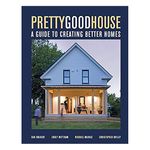
Pretty Good House
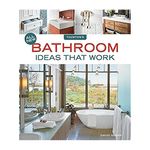
All New Bathroom Ideas that Work

A Field Guide to American Houses
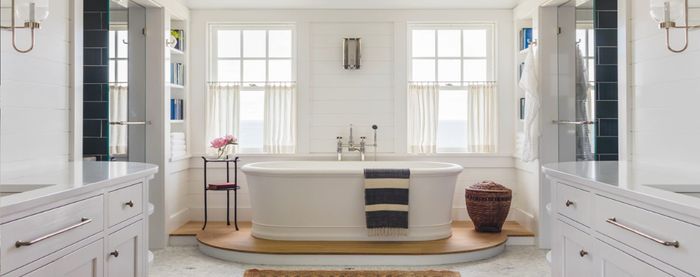




View Comments
Just want to point out the danger of slipping while getting into or out of these new tubs. Besides not being as deep, the "sunken tubs" have a tile ledge on which one can sit to safely get into or got out of the tub. I don't think a stool by the tub is quite the same. The number of slip and falls that happen in the bathroom and in tubs in particular, is astounding. Why take the chance just to look fancy, schmancy. New isn't always better.
I agree w/ BurbGuy- to paraphrase Abe Lincoln, some of us are clumsy all of the time, but all of us are clumsy some of the time.
It's hard to age in place gracefully with a broken hip. My sister worked in Physical Rehab and had a snarky habit of referring to me as "Temporarily Able."
Grab Bars Are Great!
I agree on the curbless, or doorless showers. It just makes everything more seamless and easy. Better air flow and less to gadgets or curtains to deal with. And it also ensures no stubbed toes on the shower curb haha! I've done that too many times. All these bathrooms look great btw! -Harlen, https://bathroomrenovationsbrampton.com/